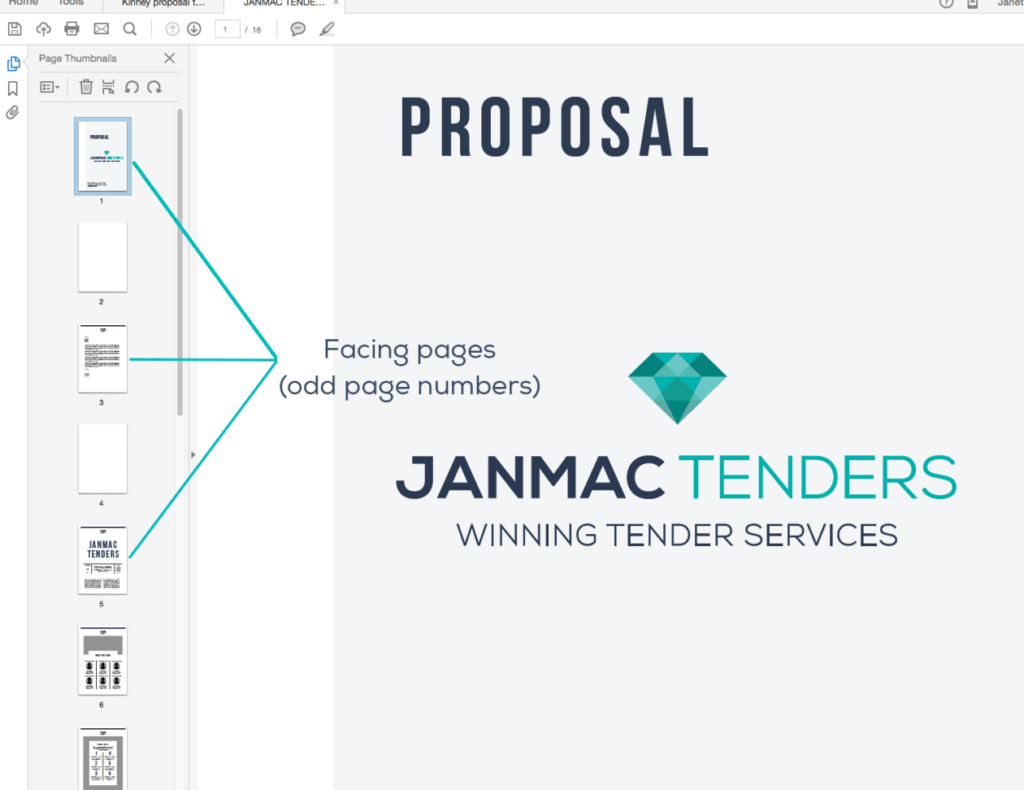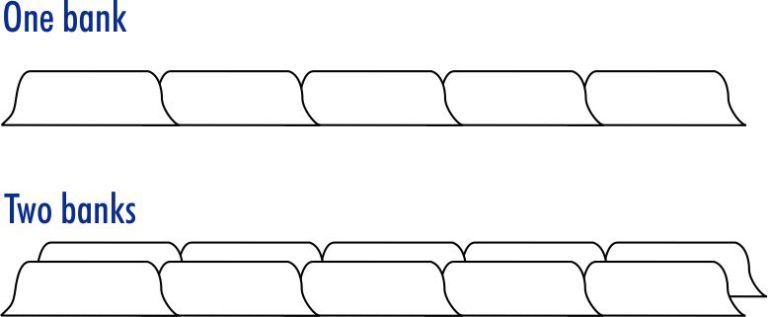Document production can often be an after thought in a detailed project or proposal schedule, or worse – not given any thought at all.
The quality of your proposal should be consistent as it represents your company’s brand and reputation. A poorly produced document can make the difference between whether you win the contract or lose it.
Does any of the following sound familiar to you?
- The document you’ve spent days, or possibly weeks working on corrupts on the deadline day
- The usually reliable office printer breaks down hours before the courier is due to collect your hardcopy document/s
- The external printers haven’t printed enough copies, or the quality isn’t very good
- Your colleagues don’t understand the importance of you monopolising the printer on deadline day!
- Microsoft Word never does what you want it to do…
- There are too many last minute revisions and not enough time to reformat the document.
I know exactly how you feel as I have tackled many of these challenges throughout my career… Read on for some useful document production tips and tricks I’ve learnt along the way. Inevitably, technology is the common thread throughout this article.
I have also gained valuable insight from Andrew Best, a freelance Production Specialist with 19 years’ experience producing high quality documents for a range of sectors, including Laing O’Rourke.
Production Schedule
It’s important to include document production as part of the overall schedule whether it’s for a project report, corporate annual report or proposal submission. This allows for sufficient and realistic timeframes for a worst-case production back-up plan.
During my experience of project and proposal management, I have found it useful to create a document schedule at, or prior to the project/proposal kick off stage.
There are various document formats you can use for the document schedule. These include Gantt charts, Excel spreadsheets, Word documents, SharePoint and even a white board if you prefer larger visuals to keep track of progress. Andrew believes that a collaboration portal (such as SharePoint) is the best technology platform for improved production schedules.
“I think it’s now impossible to create timely documents without a collaboration portal that can be accessed 24/7 and allow multiple contributors to simultaneously edit documents. This eliminates the serial review process and allows access from anywhere while also removing email and version control from the process. The document at the end is formatted, proofed, approved and PDF’d as part of a workflow with a small part of the traditional ‘effort’. Microsoft and Adobe now both offer excellent collaboration tools but customisation is the key and a lot of effort (even custom programming) needs to be done to make these tools sing.”
Many people focus on the planning and writing stage of a document rather than the production stage. Schedule timely document reviews and revisions so you have time to unleash your formatting and production magic!
Document control
It is essential to include a document controller in the project, or proposal team.
If this is you, be the master of your document destiny and always assign responsibility of the ‘master’ document to you. Enforce document control on a section-by-section basis. Use password protection to protect the document from ‘helpful’ colleagues if you have to. This sounds pedantic, but it could save you a lot of time in the long run. Document authors can include their inputs in separate document versions if this is the preferred work method, but you need to be in control of overall collation of inputs, edits, formatting and production.
Andrew also thinks restricted access is key to effective document control.
“Take document control out of the hands of the bid team and make sure you have a skilled document controller. This brings me back to technology. The central proposal team or corporate support team has to control formatting, security access and even be able to restrict access to contributors. This really helps drive milestone deadlines if contributors know they will be locked out of documents on a certain date.”
Sometimes these document control precautions aren’t always enough…I once had a colleague relocate document folders on the company server. Rather than using copy and paste, he cut and pasted the folder and managed to delete it. The folder contained the final document draft… This happened on the day before the deadline and I had to get IT to restore the file. The restored file was an old draft, but it was better than starting from the beginning!
Ever since this experience, I have often saved documents onto a separate USB drive.
Hard copy production
Client specified production requirements
How many document copies do you need to print? Has the client specified any hardcopy requirements?
Identifying these requirements early in the document production stage will ensure there are no last minute panics. It would be a disaster to submit a document that is non compliant to the client’s requirements and I have heard some horror stories over the years.
You can include ‘Original’ and ‘Copy’ references on the front cover designs, or you can use ‘Original’ and ‘Copy’ stamps on the cover letter. I think the former option gives a more professional look.
Tabbed Dividers

Do you require tabbed dividers and professionally printed document covers? If your company doesn’t have an in-house print production team it would be ideal to secure an account with a local professional printing company.
I typically outsource cover and divider prints to external printers and print the document content in the client’s office on high-resolution print setting and on high quality paper. This saves the client money and prevents the production budget from escalating.
It’s a good idea to get an extra set or more of the document dividers and covers in case of a slipped hole punch on the deadline day. Of course it’s good practice to print a hard copy for internal reference too.
Delegate
If you need production assistance, make sure you delegate effectively to colleagues who are familiar with using the required computer software and printer. It’s important to make them aware of overall production tasks and deadlines in addition to their own. This will minimise any misunderstandings during tight production deadlines and ultimately production delays.
Hardcopy production is also a topic close to Andrew’s heart…
“With a studio design and print production background I’m passionate about a good quality consistent and beautifully presented proposal. Once again, technology is critical if this is to be done in a timely fashion. Big, fast and feature-full printers are great (but only as good as the users). However it’s worth having multiple good quality printers available. All regularly serviced and lots of stock parts and consumables available. Otherwise you need a really organised team if you plan to print the body of your proposals externally.”
Facing pages (odd page numbers)
When printing hardcopies, it looks best if you print new sections on a facing page, which will always be an odd page number.
For example, in your PDF, or Word document page 2 prints onto the back of page 1, page 4 prints onto the back of page 3 and so on….
You can either print sections or appendices in separate print runs, or include blank pages to move the facing pages onto odd page numbers as I have done in the image below. This is much more time effective.

Do you like balance? Like to get even?
Then print equal banks of tabbed dividers. A bank is a single, complete row of tabs running the full length of the document.

For example, for a total of 12 tabs, you would present 3 banks of 4 tabbed dividers (4+4+4) rather than 2 banks of 5 tabs and one bank of 2 tabs (5+5+2).
It’s best to confirm early in the schedule how many tabbed dividers you need for document sections or appendices. There’s nothing worse than somebody requesting additional appendices after you’ve sent the print brief to the external printers.
Electronic copy production
As per my advice in ‘Hardcopy production’, it’s a good idea to include blank pages in the document to ensure new sections/appendices print on odd numbered pages (facing pages). This gives the client the opportunity to print a professional looking document should they wish to print their own version. They can also print off different sections if numerous people are reviewing the document.
Some clients specifically request you don’t include website or cross reference hyperlinks, or embedded documents. However, if you have free reign with this document format, it is a great way to include, or link to additional information – particularly if the client has included a page limit.
I agree with Andrew regarding production preference. Electronic copy production is much more time and cost effective and there is more scope for innovative and creative content.
“Electronic production is the way all proposals should be done in my opinion. The time and waste involved in hardcopy production is madness but Australian clients are a long way off going fully digital. However, when I think of digital submissions, I think of a lot more than documents. Video, augmented reality, interactive digital models, searchable databases and live web content should all be part of a major submission.”
Keep your colleagues informed
If you don’t have the luxury of having a team-designated printer for your fast turn around printing, it’s a good idea to advise your document contributors about the likely timeframes required for each stage of the production cycle.
Unfortunately, some project documents and proposals in particular have very tight deadline time frames whether it is to be submitted as a hard, or electronic copy.
Everybody works to their own deadlines and most people will think their document is more important than yours. If you cannot easily print your document during business hours, consider printing after hours, or send a courtesy email to all printer users advising of your urgent need for the printer.
If you have numerous document volumes to print, or a significantly large document, you can also print document copies to multiple available printers (probably to the annoyance of your colleagues mind you).
If you have any document production tips and tricks you would like to share, please include them in the comments below.





